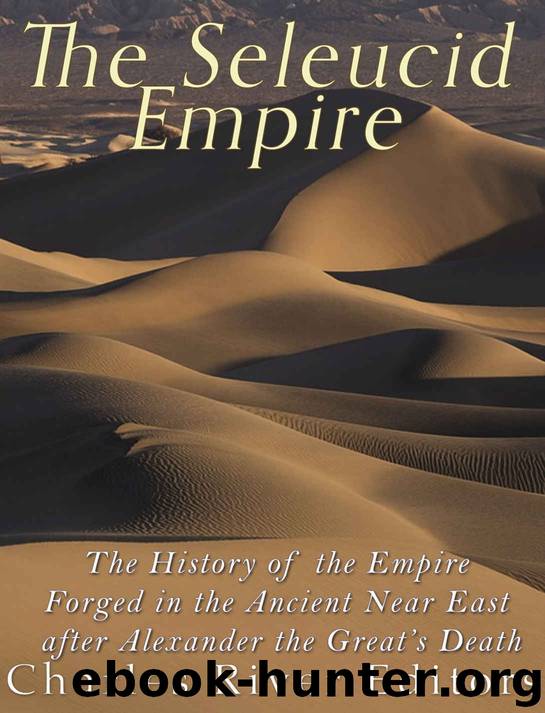The Seleucid Empire: The History of the Empire Forged in the Ancient Near East After Alexander the Great’s Death by Charles River Editors

Author:Charles River Editors
Language: eng
Format: azw3
Publisher: Charles River Editors
Published: 2016-11-15T16:00:00+00:00
A bust believed to depict Hannibal
The Roman policy of holding royal Seleucid children as hostages continued until the final dissolution of the Seleucid Dynasty and proved to be a useful political tool because the Seleucids rarely challenged Roman authority after the reign of Antiochus III. Besides the loss of territory and the giving of noble hostages, the Seleucids were forced to pay a yearly indemnity to the Romans (Bryce 2014, 190).
Meanwhile, even as Antiochus III dedicated the majority of his reign to military campaigns, like his predecessors, he also took an interest in the domestic affairs of his kingdom. Antiochus III was not as heavily involved with Babylonian culture as Seleucus I and Antiochus I were, but there is evidence that he occasionally played a role in the traditional Babylonian New Year festival (Boiy 2011, 11). The king’s participation in Babylonian religion is not insignificant, even if his involvement was minimal compared to his predecessors, but with that said, Antiochus III’s participation in the native cults should be viewed in a more cynical light. It seems apparent he did so to appease the still important Babylonian priesthood more than having any deep belief in the Babylonian pantheon.
Download
This site does not store any files on its server. We only index and link to content provided by other sites. Please contact the content providers to delete copyright contents if any and email us, we'll remove relevant links or contents immediately.
The Daily Stoic by Holiday Ryan & Hanselman Stephen(3235)
The Fate of Rome: Climate, Disease, and the End of an Empire (The Princeton History of the Ancient World) by Kyle Harper(3003)
People of the Earth: An Introduction to World Prehistory by Dr. Brian Fagan & Nadia Durrani(2701)
Ancient Worlds by Michael Scott(2625)
Babylon's Ark by Lawrence Anthony(2620)
The Daily Stoic by Ryan Holiday & Stephen Hanselman(2459)
Foreign Devils on the Silk Road: The Search for the Lost Treasures of Central Asia by Peter Hopkirk(2434)
India's Ancient Past by R.S. Sharma(2416)
MOSES THE EGYPTIAN by Jan Assmann(2373)
The Complete Dead Sea Scrolls in English (7th Edition) (Penguin Classics) by Geza Vermes(2235)
Lost Technologies of Ancient Egypt by Christopher Dunn(2194)
The Earth Chronicles Handbook by Zecharia Sitchin(2180)
24 Hours in Ancient Rome by Philip Matyszak(2050)
Alexander the Great by Philip Freeman(2033)
Aztec by Gary Jennings(1975)
The Nine Waves of Creation by Carl Johan Calleman(1884)
Curse Tablets and Binding Spells from the Ancient World by Gager John G.;(1838)
Before Atlantis by Frank Joseph(1811)
Earthmare: The Lost Book of Wars by Cergat(1790)
